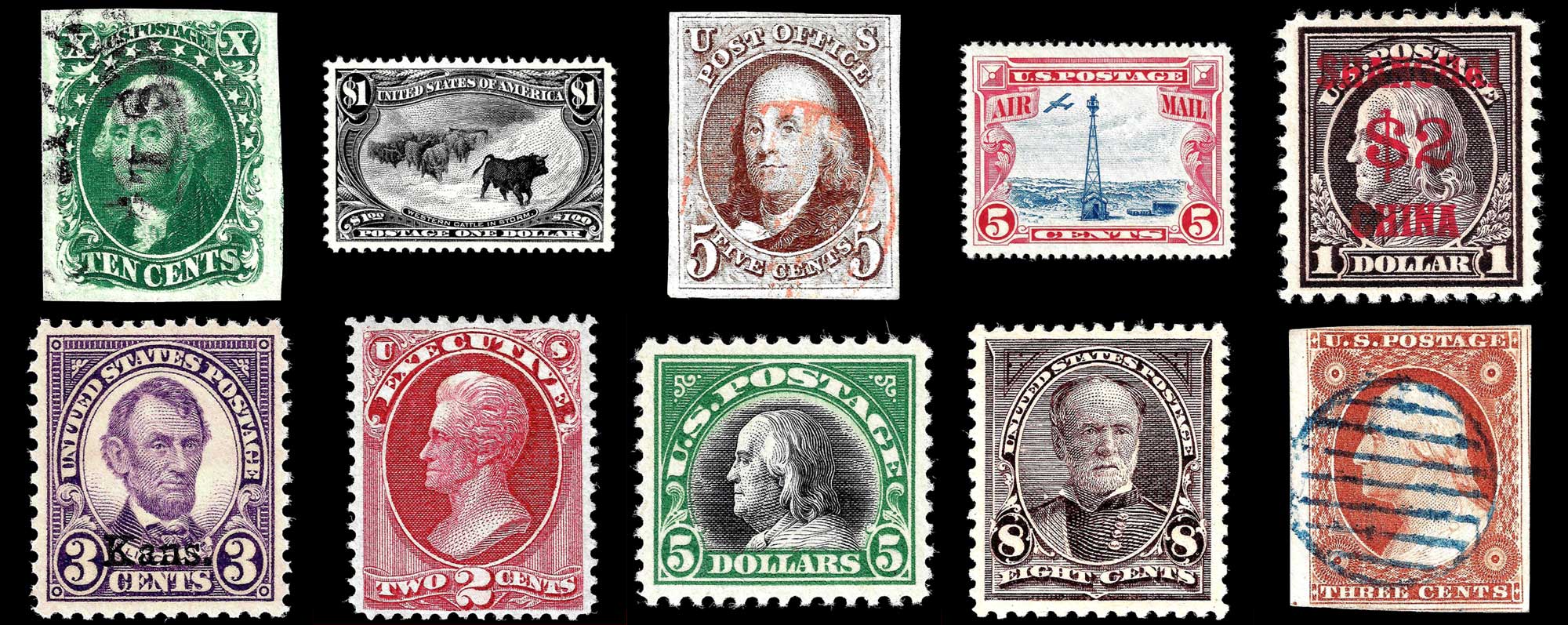Scott #35, a ten-cent United States postage stamp, is a unique entry in the mid-19th-century stamp series with its Type V design. While sharing some design elements with Scott #31-34, it is distinguished by specific modifications, notably the absence of pearls on the sides.
Design & Print
The Type V design of Scott #35 exhibits a blend of characteristics from other types. Similar to Type I, the shells at the bottom of Scott #35 are complete. It also shares similarities with Type IV, featuring a heavy and complete bottom frame line. However, the defining feature of Type V is the modification of the side ornaments – the pearls on the side are mostly or entirely removed, resulting in incomplete side ornaments. This particular design choice gives Scott #35 a distinct appearance within the series.
Postal Usage
Scott #35 was commonly used to pay the half-ounce, over-3,000-mile postal rate, making it an essential stamp for long-distance domestic mail. This rate often covered coast-to-coast deliveries and other substantial postal requirements. The ten-cent denomination of Scott #35 made it a vital component of the postal system for significant correspondence during this period.
Identification
Identifying Scott #35 as a Type V design requires close examination of its side ornaments and bottom frame line. The absence or significant reduction of pearls on the sides and the heavy, complete bottom frame line are key indicators of the Type V design. These specific design elements set Scott #35 apart from other types in the series and are crucial for accurate identification and categorization in philatelic collections.
Scott #35, with its Type V design, holds a significant place in U.S. postal history. Its unique design features, particularly the treatment of the side ornaments and the bottom frame line, combined with its role in facilitating long-distance mail, underscore its value in the narrative of American philately. Understanding the nuances of Scott #35’s design, postal usage, and identification offers a comprehensive perspective on its role in the broader context of American postal history and collection.




















































Ask A Question Or Leave A Comment